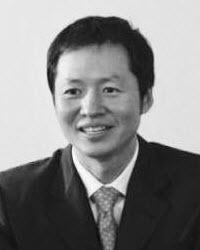[Management in Korea] Looking beyond the first day in hiring external executives
By Korea HeraldPublished : Sept. 30, 2018 - 11:48
Management in Korea is a regular column written by members of Egon Zehnder Seoul, touching on various aspects of Korean enterprises and business leaders and offering management tips. -- Ed.
Korean companies have long relied on promoting leaders from within. While there are many benefits to this talent strategy, it often falls short when organizations need leaders with new competencies and experiences. This is why in the face of the widespread changes reshaping the global economy, Korean companies are increasingly looking outside their ranks for talent, particularly in areas such as digital and marketing.
When an external hire for a senior role is made, there is a great deal of pressure to ensure that the new candidate is a success. To warrant bypassing internal candidates, the position is likely to be of strategic importance. The person hired has to be highly desirable and therefore required considerable wooing. And whoever made the decision -- even if it was the CEO -- has spent significant political capital in doing so.
Yet despite having so much at stake, most companies adopt a “sink or swim” approach to new executives, a clearly imperfect strategy given the importance placed on following cultural norms and expectations in Korean companies.
In order for new executives to meet the high expectations that surround them, companies must put as much effort integrating those leaders into the organization as was put into convincing them to join in the first place.
Korean companies have long relied on promoting leaders from within. While there are many benefits to this talent strategy, it often falls short when organizations need leaders with new competencies and experiences. This is why in the face of the widespread changes reshaping the global economy, Korean companies are increasingly looking outside their ranks for talent, particularly in areas such as digital and marketing.
When an external hire for a senior role is made, there is a great deal of pressure to ensure that the new candidate is a success. To warrant bypassing internal candidates, the position is likely to be of strategic importance. The person hired has to be highly desirable and therefore required considerable wooing. And whoever made the decision -- even if it was the CEO -- has spent significant political capital in doing so.
Yet despite having so much at stake, most companies adopt a “sink or swim” approach to new executives, a clearly imperfect strategy given the importance placed on following cultural norms and expectations in Korean companies.
In order for new executives to meet the high expectations that surround them, companies must put as much effort integrating those leaders into the organization as was put into convincing them to join in the first place.


At most companies, that integration is limited to administrative matters like a review of policies and how to access various company resources. A handful of Korean companies have more extensive onboarding programs that cover the history and values of the organization. But even these curricula fail to address the real barriers that newcomers face once they actually start working with their new colleagues.
Consider, for example, the considerable role that socializing outside of the office plays in Korea. The challenge here is deeper than being the new person at hoesik. As much as hoesik symbolizes the social aspect of Korean business culture, the process of forming personal bonds occurs in many other settings as well, from weekend afternoons hiking the trails of Bukhansan to gatherings organized by the year one entered the company.
No matter how talented, a new leader cannot hope to be successful professionally unless he or she is accepted socially. Companies should have respected sponsors for the leader within each of the key social circles that leader needs to join. Including those sponsors in the hiring process will build early bonds -- and give the sponsors a vested interest in the newcomer’s success.
Given the importance of group cohesion in Korean organizations, it is essential to view the integration process as an ongoing collective effort rather than a routine administrative task involving one person.
Doing so will help counter the “zero sum” mentality that is an unfortunate element of Korean business culture, in which there is a limited quantity of success and the more success the newcomer achieves, the less there is available for everyone else. The new leader’s department or business unit -- and particularly his or her direct reports -- need to be told explicitly that the success of their new boss will reflect well on them and that they will be rewarded accordingly.
The integration process can be further helped along if at least one of the new executive’s sponsors is assigned to brief the new executive on the professional dynamics of his or her new role, including identifying the various stakeholders and their priorities, and how the new leader can most effectively position himself or herself when first meeting new colleagues.
As providing this type of guidance is particularly sensitive, it should be done by a senior leader who can be counted on to be even-handed and to keep the best interests of the newcomer in mind, such as the new executive’s superior, the CEO or a board member.
As important as it is for the company to make a concerted effort to support the external hire, the new executive must do his or her part as well.
Even executives brought in with a mandate to make sweeping changes need to approach their new home with respect and patience, conscious that they need to learn before they can teach.
This is why it is particularly important to probe for particular personality traits in the recruitment process. Does the executive have the curiosity to embrace a new environment on its own terms? The determination to persevere beyond the inevitable setbacks? The sense of engagement that allows for connection with others? Has the candidate shown the ability to adapt to new and unpredictable surroundings? Structured interviews and in-depth questioning centered on key moments in the candidate’s career can give invaluable insight into how prepared he or she is to tackle the challenge of joining a new organization.
Integration of a new executive must be approached holistically, spanning the professional and the social and from the hiring process to long after the candidate reports for his or her first day. If both the company and the executive are willing to make a sustained effort and take the long-term view, they will have considerably boosted the chance of the new executive’s success.
Consider, for example, the considerable role that socializing outside of the office plays in Korea. The challenge here is deeper than being the new person at hoesik. As much as hoesik symbolizes the social aspect of Korean business culture, the process of forming personal bonds occurs in many other settings as well, from weekend afternoons hiking the trails of Bukhansan to gatherings organized by the year one entered the company.
No matter how talented, a new leader cannot hope to be successful professionally unless he or she is accepted socially. Companies should have respected sponsors for the leader within each of the key social circles that leader needs to join. Including those sponsors in the hiring process will build early bonds -- and give the sponsors a vested interest in the newcomer’s success.
Given the importance of group cohesion in Korean organizations, it is essential to view the integration process as an ongoing collective effort rather than a routine administrative task involving one person.
Doing so will help counter the “zero sum” mentality that is an unfortunate element of Korean business culture, in which there is a limited quantity of success and the more success the newcomer achieves, the less there is available for everyone else. The new leader’s department or business unit -- and particularly his or her direct reports -- need to be told explicitly that the success of their new boss will reflect well on them and that they will be rewarded accordingly.
The integration process can be further helped along if at least one of the new executive’s sponsors is assigned to brief the new executive on the professional dynamics of his or her new role, including identifying the various stakeholders and their priorities, and how the new leader can most effectively position himself or herself when first meeting new colleagues.
As providing this type of guidance is particularly sensitive, it should be done by a senior leader who can be counted on to be even-handed and to keep the best interests of the newcomer in mind, such as the new executive’s superior, the CEO or a board member.
As important as it is for the company to make a concerted effort to support the external hire, the new executive must do his or her part as well.
Even executives brought in with a mandate to make sweeping changes need to approach their new home with respect and patience, conscious that they need to learn before they can teach.
This is why it is particularly important to probe for particular personality traits in the recruitment process. Does the executive have the curiosity to embrace a new environment on its own terms? The determination to persevere beyond the inevitable setbacks? The sense of engagement that allows for connection with others? Has the candidate shown the ability to adapt to new and unpredictable surroundings? Structured interviews and in-depth questioning centered on key moments in the candidate’s career can give invaluable insight into how prepared he or she is to tackle the challenge of joining a new organization.
Integration of a new executive must be approached holistically, spanning the professional and the social and from the hiring process to long after the candidate reports for his or her first day. If both the company and the executive are willing to make a sustained effort and take the long-term view, they will have considerably boosted the chance of the new executive’s success.

By Eugene Kim and Nam You-sun
Eugene Kim is the managing partner of advisory firm Egon Zehnder Seoul. He can be reached at Eugene.Kim@egonzehnder.com. Nam You-sun is the research analyst at Egon Zehnder Seoul. She can be reached at Yousun.nam@egonzehnder.com. -- Ed.
Eugene Kim is the managing partner of advisory firm Egon Zehnder Seoul. He can be reached at Eugene.Kim@egonzehnder.com. Nam You-sun is the research analyst at Egon Zehnder Seoul. She can be reached at Yousun.nam@egonzehnder.com. -- Ed.
-
Articles by Korea Herald









![[Kim Seong-kon] Democracy and the future of South Korea](http://res.heraldm.com/phpwas/restmb_idxmake.php?idx=644&simg=/content/image/2024/04/16/20240416050802_0.jpg&u=)










![[Today’s K-pop] Zico drops snippet of collaboration with Jennie](http://res.heraldm.com/phpwas/restmb_idxmake.php?idx=642&simg=/content/image/2024/04/18/20240418050702_0.jpg&u=)